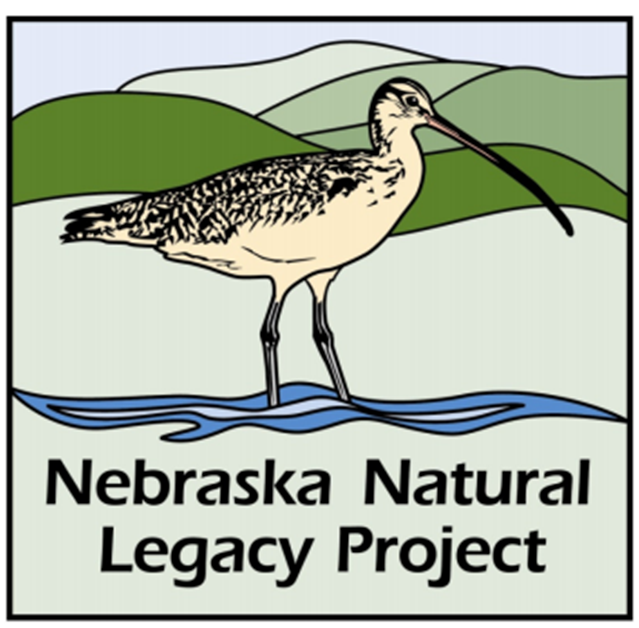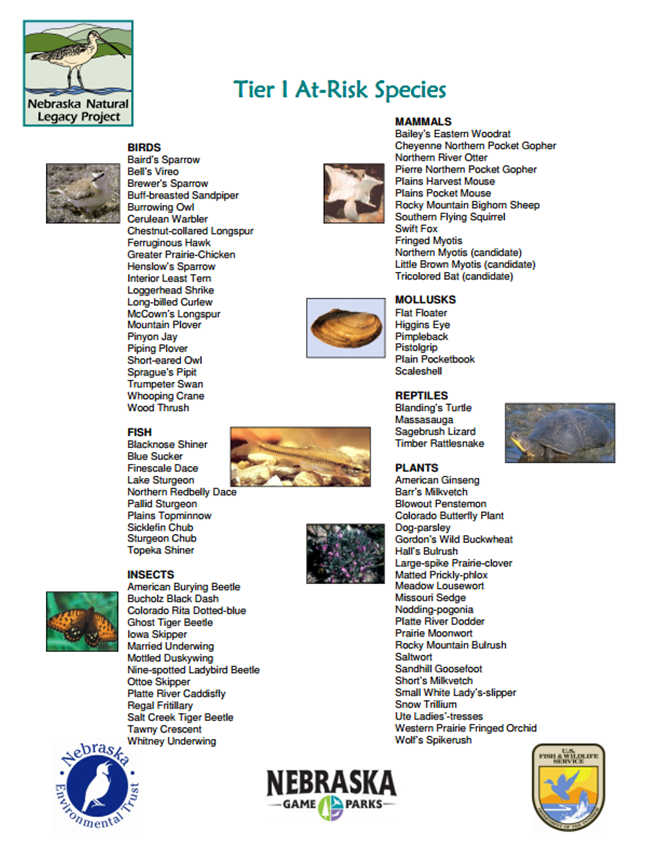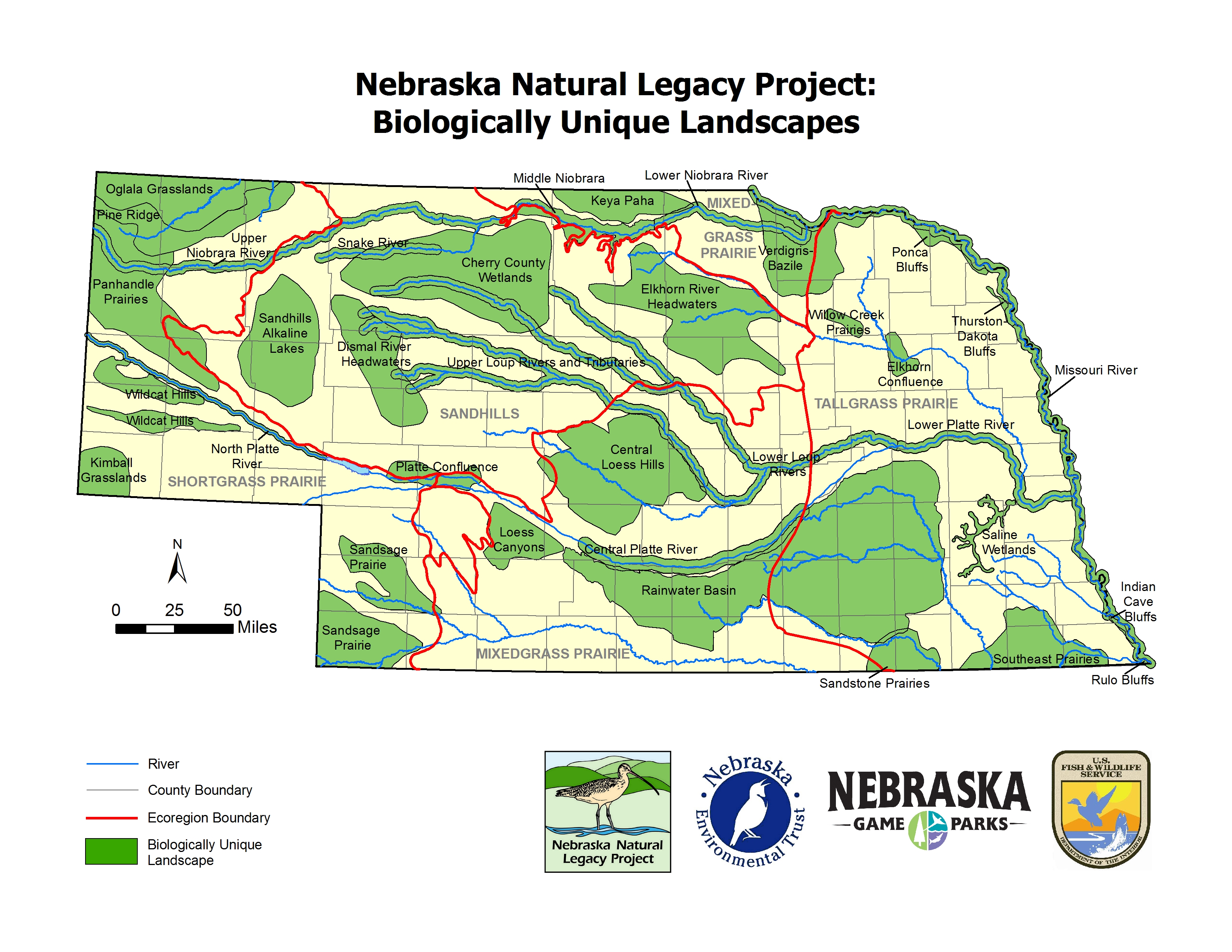
Nebraska Natural Legacy Project Logo

Nebraska Natural Legacy Project Tier I Species

Conserve Nebraska's Bats Informational Sign
The Nebraska Natural Legacy Project
The Nebraska Natural Legacy Project is a science-based blueprint for conserving Nebraska's biological diversity using voluntary, non-regulatory opportunities.
The Legacy Project is Nebraska's State Wildlife Action Plan, which is part of a nationwide effort involving all 50 states and six territories.
Collaboration with many groups, private landowners and other stakeholders is key to the success of the Natural Legacy Project. A 25 member Partnership Team representing the interests of Nebraska's conservation, agricultural, and Native American communities guides the planning process.
The goals of the Natural Legacy Project:
- Reverse the decline of at-risk species (and avoid the need for state or federal listing as threatened or endangered).
- Recover currently listed species and allow for their de-listing.
- Keep common species common.
- Conserve natural communities.
At-Risk Species
The Nebraska Natural Legacy Project Science Team developed a two-tiered approach to identifying species that may be at-risk of extinction or extirpation from the state.
- Tier I - species that are globally or nationally at-risk; includes species currently state or federally listed.
- Tier II - species that are at-risk in Nebraska, but may be doing well in other parts of their range.
Several at-risk species may be sensitive to wind energy development. Following are a few examples.
Bats:
- Fringed Myotis (Myotis thysanodes pahasapensis)- Tier I;
- Townsend's Big-eared Bats (Corynorhinus townsendii) - Tier II;
- Long-legged Myotis (Myotis volans) - Tier II;
- Northern Long-eared Bat (Myotis septentrionalis) - Threatened (state and federal);
- Evening bats (Nycticeius humeralis) - Tier II;
- Tricolored bats (Perimyotis subflavus)- Candidate for Tier I
- Little Brown Myotis (Myotis lucifugus) - Candidate for Tier I
Birds:
- Greater Prairie-Chicken (Tympanuchus cupido)- Tier I;
- Burrowing Owl (Athene cunicularia) - Tier I;
- Ferruginous Hawk (Buteo regalis) - Tier I;
- Peregrine Falcon (Falco mexicanus ) - Tier II;
- Townsend's Solitaire (Myadestes townsendi) - Tier II.
Terrestrial Animals:
- Blanding's Turtle (Emydoidea blandingii) - Tier I;
- American Burying Beetle (Nicrophorus americanus) - Tier I, State and Federally listed as Endangered.
Biologically Unique Landscapes
The Nebraska Natural Legacy Project selected landscapes based on known occurrences of natural communities and at-risk species to meet set goals for each community type and certain at-risk species.
A set of landscapes were determined that offer some of the best opportunities for conserving the full array of biological diversity in Nebraska. Over thirty landscapes across the state were designated Biologically Unique Landscapes and are shaded green on the map below.

Nebraska Natural Legacy Project: Biologically Unique Landscapes
For more information about Biologically Unique Landscapes and the Nebraska Natural Legacy Project visit: http://outdoornebraska.ne.gov/wildlife/programs/legacy/.